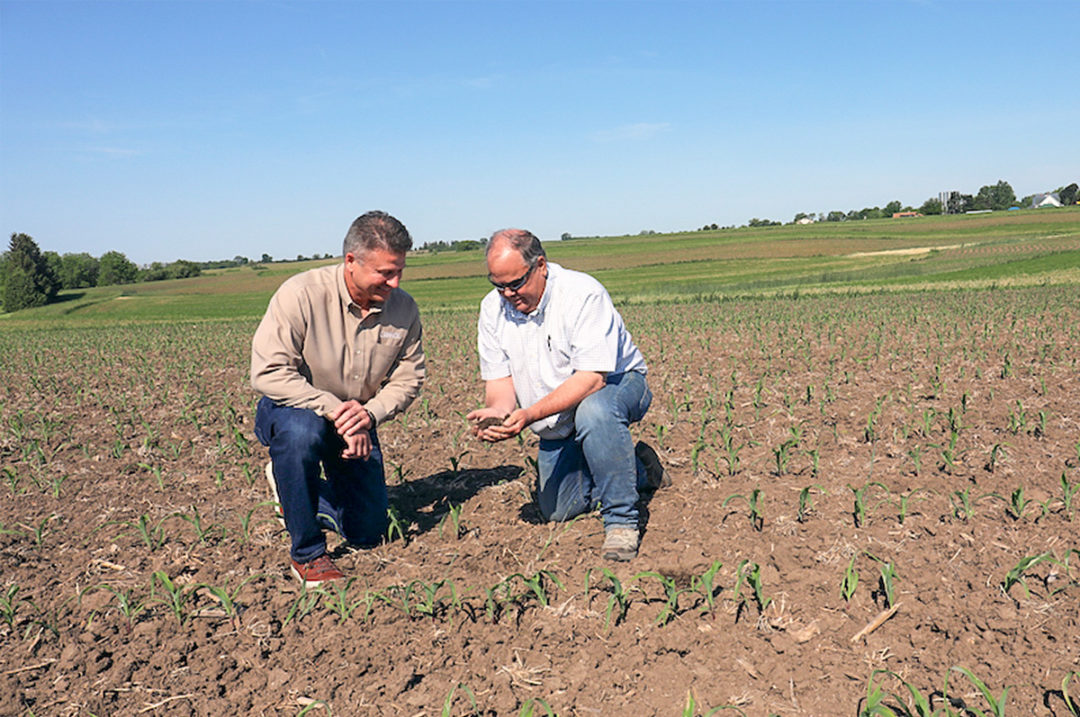With sustainability becoming ever more a focus in the food system, the urgency of creating practical ways to achieve something meaningful is increasing.
To support this need, Farmers for Sustainable Food, a nonprofit organization of food system partners, developed the Framework for Farm-Level Sustainability Projects. This guide outlines a project-based approach for farmers and other businesses as well as conservation professionals and organizations within a region to collectively address challenging financial and economic conditions, customer preferences and environmental regulations.
The framework was put to the test by a farmer-led conservation group in Wisconsin that won a national award for “Outstanding Supply Chain Collaboration” in 2021 from the Innovation Center for U.S. Dairy. A second group and two food processors in the Midwest are now also using the guide.
“The framework is all about supporting farmers and their partners in making a sustainability project easy and impactful,” Lauren Brey, managing director of the sustainability group, says.
Brey offers these steps to a successful project:
1. Pull together partners, purpose
To get started, find partners such as farmers, agricultural industry representatives, non-profit organizations and local conservation professionals in a specific area. Farmers and advisers who have technical and leadership abilities and time to commit to the effort can be valuable resources. The group then needs to identify a project idea, for example, quantifying the financial impact of conservation; outlining the purpose, issues and goals; or identifying local natural resource concerns. Consider collaborating with existing projects or programs that could be complementary. Determining what regulations apply to agricultural practices in the area is important. Lastly, introduce the project idea to more local farmers/landowners who may want to be involved.
2. Get organized
Once the group and ideas are established, determine possible sources of funding, such as government grants, and explore local and state agencies that could contribute in-kind support, such as data collection and entry. Pursue funding from private sources like ag businesses or local organizations that might benefit from your project. You’ll want to obtain financial support for at least two-thirds of the project tasks for a year.
You will also need to get commitment from key stakeholders to form a core local team to execute the project. These could be farmers, other landowners, conservation professionals and other local groups. Get buy-in from all parties, which might require refining the project scope. Then define tasks, actions and responsibilities, as well as which tools and methods will be used for the assessment.
3. Analyze and assess
Set initial meetings with partners to build familiarity with the project scope, tools and deliverables. Work with farmers to set clear expectations of what data is being collected, how often and where, and data privacy expectations. Once data are collected and assessment tools have been run for the farms, start analyzing and summarizing the information. Consider use of third-party contractors to assist with environmental analyses. Let the farmers see their results, and discuss potential changes for improvement. Host workshops for farmers and partners to review the overall results, discuss implications, provide suggestions for changes and answer questions.
4. Get the word out
Once the project has completed one year, create and distribute reports with aggregate information. This could include background, methodology, results and findings. Let the community know as well, for example by making a presentation to a community group or government committee, or inviting a local news reporter to learn more. Consider doing this each year of the project.
“This framework is designed to be flexible,” Brey says. “We encourage others to take this and use it to create their own projects wherever they are.”
This series is brought to you by the Dairy Business Association on behalf of the Dairy Strong conference, Jan. 18-19, 2023. This event focuses on cutting-edge technology, cultural and consumer trends, and the future of the dairy community. Learn more about Dairy Strong.






